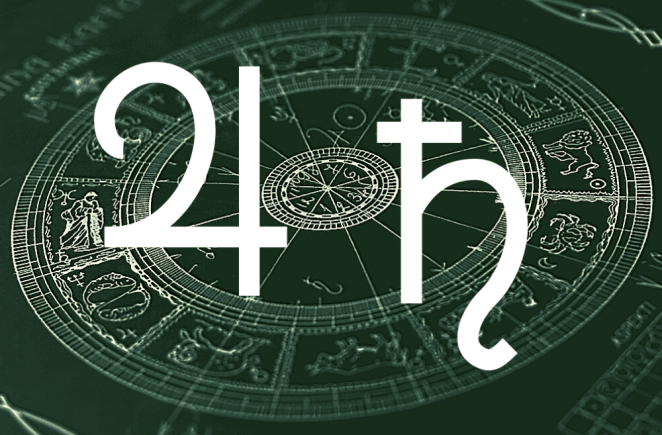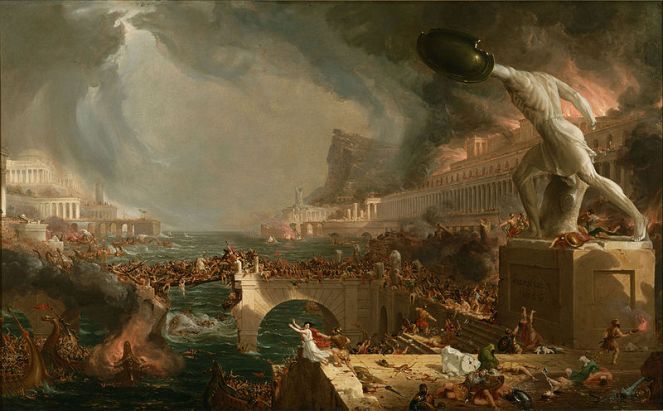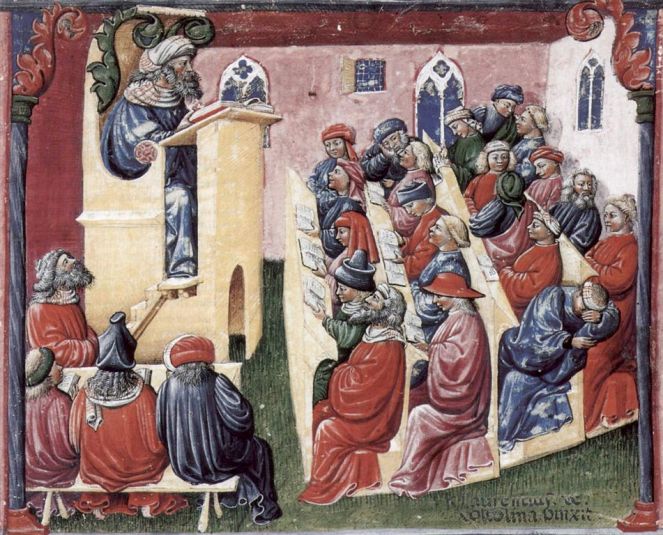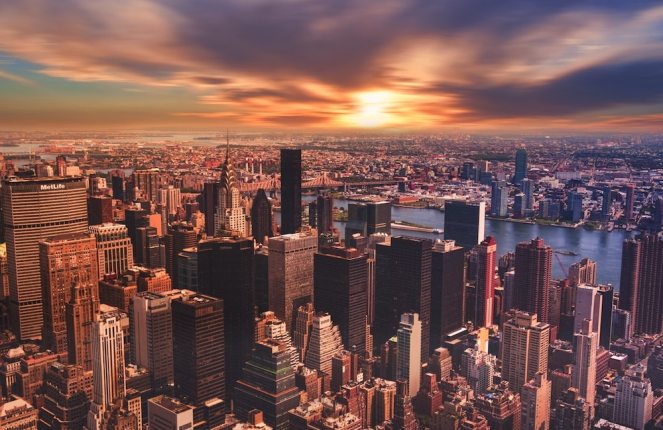Last time we looked at the ups and downs of the Great Mutation in the Jupiter Saturn cycle. We’ve reached the end of a 200 year cycle of earth conjunctions and are about to transition into an air cycle. In this post we’ll explore some of the history of these transitions to get a sense of where we might be heading.

As we saw in the last post, the Jupiter Saturn cycle correlates with changes to the structure of societies and civilisations. These changes follow the pattern of the elements, with the events of one cycle seeding developments in the next and building over time.
The last time we transitioned from earth into an air cycle was 800 years ago. The previous earth cycle was between 1007 and 1206, and the air cycle transition started in 1186 with a conjunction in Libra. This was followed by the final earth conjunction in Taurus in 1206, followed by an Aquarius conjunction in 1226.
This air cycle ran during the 13th and 14th centuries, from 1186 to 1405, ‘officially’ starting in 1226. Multiple empires rose and fell – there was a lot of fighting – but isn’t there always! The Plague brought more death, but there was also a huge expansion in trade and travel, and the growth of towns and cities. In general, there’s a transitional feel with lots of churn and movement – nothing settles for long…
In Europe, the Medieval Church was busy fighting a series of Holy Wars – the Crusades – which began back in the 11th century to defend Christianity from Muslim forces and the spread of the Islamic Empire. Some were fought against heretics, such as the Cathar Crusade in France, or against witchcraft.
Not all Christians were burning people at the stake. Some were setting up monastic orders, such as the Franciscans, founded by St Francis of Assisi in 1209, and the Dominicans founded in 1216. The Carmelites were also founded around 1155 by a bunch of hermits on Mount Carmel in the Holy Land, and they came to Europe in the 13th century.
In the 13th century the Christian Empire also had to deal with the Mongols. It was in 1206 that Temujin took the name Genghis Khan and united the various Mongol tribes under his leadership. They conquered China in 1215 and then spread west through Asia and into Europe. The Mongol invasions also brought an end to the Islamic Golden Age.
The Mongols are often seen as barbarian hordes laying waste to civilisation. But in 1260 Kublai Khan established roads, a postal system and social welfare in China. In the end, the Mongol Empire was the largest contiguous land empire in history. Later, the British Empire would be larger, but it was more spread out.
The fall of empires at the hands of barbarians is a theme that repeats in every air cycle. In the 5th century, the shift from earth into air saw the fall of the Roman Empire due to repeated waves of barbarians, amongst other things. And before that, in the 4th century BCE Alexander the Great broke up the Persian Empire and invaded Egypt, creating a new empire and trading network.

As bad as all this fighting was, in the 13th and 14th centuries there was something even more deadly: famine and disease. During this period there were multiple pandemics and famines, often triggered by cold weather caused by volcanoes and perhaps the start of the Little Ice Age. The Great Famine of 1315-17 killed an estimated 30-60% of Europe’s population.
The Black Death or the Plague was the deadliest pandemic in history. It appears to have started in China during a famine in 1325 which killed 8 million people. From there it spread along the Silk Road into Asia and then Europe, where it peaked in 1347-51, killing 25 million people in 4 years.
Even after the worst had ended there were several further outbreaks, often accompanied by famine. An estimated 75-200 million people died in total. Villages were devastated, leaving ‘The Desolation’ which drove people into the towns and led to an increase in urbanisation.
The scale of the death and suffering led to cultural and social changes that revolutionised the way we live. In 1381 the Peasants’ Revolt marched on London seeking reform and rights. However, change had already begun with the signing of the Magna Carta in 1215 by King John in England. This limited the power of the monarchy and affirmed the rights of the people, but it also handed more power to the barons and created an aristocratic oligarchy.
As the towns and cities grew the first cathedrals were built, bringing people together. Some of these produced Cathedral schools which developed into the first universities. The earliest were founded during the transition into air at Paris, Bologna, Oxford, and Cambridge. The University of Paris was chartered in 1200 and officially recognised by the Pope in 1215, and its theological college (which became the Sorbonne) was founded in 1253.
These were the first but then the floodgates opened in the 13th century leading to a great explosion of learning, which was also experienced in the monasteries. This was facilitated by changes in how manuscripts were created and shared. A shift from using vellum to paper meant it was easier to bind manuscripts into books, although they were still copied by hand by monks.
By the 13th century, Paris had a growing trade in book-manuscripts that were created to order, usually by wealthy patrons. This led to a growth in scribes who were hired to produce copies of books, often working in teams to churn out multiple copies.
The Chinese had been using movable type for printing for centuries and by the 13th century were using metal type. Meanwhile Europe was using block printing imported from China via the Mongols, mostly for printing on cloth and playing cards. But its use to create books slowly began to spread, culminating with the printing press in about 1450, but that was into the next water cycle.

All these developments laid the groundwork for the Renaissance which started about halfway through this cycle, although the intellectual development was seeded right from the start. This began with the return of ancient knowledge and the rediscovery of the works of Plato and Aristotle.
Many Greek scholars left Constantinople and went to Italy after the city was attacked by Crusaders. The migrations happened over a period of time, starting in 1204 and peaking in 1453 when Constantinople fell to the Ottoman Empire. The ideas they brought with them had a huge influence on the growth of humanism and science over the coming centuries.
Notable figures and developments in science during this era include:
- Fibonacci, who published his Liber Abaci on arithmetic, including the Fibonacci sequence.
- Roger Bacon, the Franciscan friar who used empiricism in his experimental research at Oxford, and was later imprisoned for heresy.
- William of Occam, another Franciscan who used nominalism and his now famous Razor to remove assumptions.
- Petrarch, the Italian scholar who coined the term ‘Dark Ages’ to describe the Middle Ages.
- The first humanist treatise on education written by Vergerio, Concerning Liberal Studies.
Aside from the Crusades, Christianity was getting stirred up by various figures, including Thomas Aquinas who redefined the dogma in his Summa Theologiae; and mystics like Meister Eckhart who was influenced by Neoplatonism and the perennial philosophy. There was a great flowering of mysticism in the 14th century with Julian of Norwich in her Revelations of Divine Love, and the anonymous monk who wrote The Cloud of Unknowing, amongst many others.
Meanwhile, the expanded trade routes and cultural networks were creating opportunities for explorers to discover new worlds, such as Marco Polo, whose brilliantly named Book of Various Experiences widened European horizons. And the Merchants’ Handbook written by Pegolotti shared trade and travelling conditions around the world.
These networks also fed the Renaissance in art, music, and literature, beginning in the Italian city states, especially Florence where the Medici family rose to power near the end of the air cycle. But the seeds had already been planted, with many notable works being created during this time, such as:
- The Eddas, poems of Scandinavian legends written by Snorri Sturluson
- Wolfram von Eschenbach’s version of Parsifal, a legendary figure associated with the Holy Grail
- Gottfried von Strassburg’s version of Tristan and Isolde, a medieval legend of courtly love
- The legend that would become the Pied Piper of Hamelin story
- The semi-legendary Robin Hood stories of a medieval outlaw robbing the rich and giving to the poor
- Giotto, the painter who introduced a more naturalistic style, such as in The Marriage of the Virgin
- The Divine Comedy written by Dante about a spiritual journey from hell to paradise
- The many works of Geoffrey Chaucer, including Troilus and Criseyde, and the Canterbury Tales
- On Painting by Alberti (1435), systematised the use of perspective in painting which started to become more realistic from the middle of the 13th century
The Renaissance continued to flourish and expand into the following water cycle in the 15th and 16th centuries. This period saw big changes to the Church in the Reformation, as well as the start of the Scientific Revolution. This enabled the colonisation of the Americas and the rise of the slave trade and the start of globalisation.
These changes fed into the following fire cycle in the 17th and 18th centuries, with the expansion of empires and revolutions in England, America and France. It also saw the development of the novel and individualism in the Age of Enlightenment, and a huge outpouring of science, art and culture.
And these developments fed into the current earth cycle which is now coming to an end. This cycle ran in the 19th and 20th centuries, starting with a conjunction in Virgo in 1802. This was followed by the final fire conjunction in 1821, and then a conjunction in Capricorn in 1842. We started to toggle out of earth with three conjunctions in Libra in 1980-81, followed by the final earth conjunction in Taurus in 2000.
This period saw a massive consolidation of empire building and mastery of the material world in the industrial revolution. These developments were seeded in earlier centuries, and the expansion of ideas that grew out of the Renaissance allowed Europe to become the dominant culture on the planet.
By the end of the 20th century, the West had built a global empire by centralising power based on the accumulation of land, material wealth and security in a hierarchical structure. It appeared unassailable, but appearances can be deceptive.

The earth cycle began with the Industrial Revolution in Britain and Europe, rolling out in stages with one innovation leading to another. The first revolution started at the end of the fire cycle in the late 18th century with the steam engine, the mechanisation of spinning and the discovery of electricity. These developments were consolidated in the earth cycle with the railways and Stephenson’s Rocket, and the electric lightbulb.
The second revolution started with the exploitation of new sources of energy such as oil, plus the invention of the telegraph, telephone, phonograph, movies, flight, and cars. The third revolution started with developments in electronics, computing, nuclear power and atomic physics. And the fourth revolution started with the transition into the air cycle with further developments in technology, including the internet and robotics.
There are too many scientific and technological inventions and discoveries to list – it’s like a fire hose in your face – relentless.
These innovations were facilitated by a shift in worldview that happened in the previous fire cycle when Descartes had a vision of a mechanistic universe. This was backed up by Newton and his fundamental laws of physics, and it fed the growth of materialist science. But it didn’t start out that way.
When The Royal Society was formed in 1660 by a bunch of Freemasons, the membership was a mix of scientists and amateurs (or non-scientists). They needed money to fund their experiments and that came from the rich amateurs. Many of these early members were alchemists or astrologers (the horror!), and Newton was both.
But in 1830 the balance shifted when the amateurs were purged and the Society decided to go pro. They wanted to do ‘proper’ science without the interference of religion. The change in membership was also related to an attempt to suppress evidence of the Jacobite involvement in the Society following the English Civil War. But the upshot was the materialists outnumbered the rest.
 Fast forward to today and we have the abomination that is scientism – a new religion. And the sticky problem of science being influenced by rich patrons didn’t go away either. Science isn’t as objective as scientists would have you believe, and neither are the scientists.
Fast forward to today and we have the abomination that is scientism – a new religion. And the sticky problem of science being influenced by rich patrons didn’t go away either. Science isn’t as objective as scientists would have you believe, and neither are the scientists.
Anyway, besides science, this era also saw the rise of corporate power and a world dominated by transnational organisations with the market as king. Economics became the dominant ideology based on capitalism, and this led to the rise of an affluent middle class and consumer culture.
On the other side of the aisle, Marx wrote his Communist Manifesto in 1848, and this fed into the rise of socialism and other political movements such as trade unions and labour movements. There were reforms in voting, education, work, and healthcare. Democracy spread, but so did fascism and communism, and two World Wars redrew the world map.
We saw the peak of the British Empire and its fall. And the rise of the USA as a global superpower. A look at the news right now should tell you this era is about to end.
Next time, we’ll look at the Jupiter Saturn conjunction itself…
Images: Empire; University; New York
More Jupiter Saturn Cycle posts
Thanks for reading! To support my work, donate below 🍵. Thanks in advance! 🙏❤️


Absolute genius! I’m sharing far and wide!
LikeLiked by 1 person
Glad you enjoyed it Francesca!
LikeLike
Would be curious to hear about these cycles from the perspective of African continent and Central/South America.
LikeLiked by 1 person
I would too! Unfortunately I had to limit myself to the ‘West’ for length, but also it’s where I’m from so that’s my perspective – I don’t have the correct insight to look at cultures I know nothing about. I would only balls it up and make a fool of myself! 😉
LikeLiked by 1 person
Jessica, this is wonderful, very well done. This information should be inwardly digested by all. Aquarius and the air signs must surely indicate an era of free flowing information — and wisdom. And by golly do we deserve that.
LikeLiked by 1 person
Let’s hope so…!
LikeLike
Wonderful piece, the best breakdown of these earlier cycles I’ve found yet! Thank you so much for your inspiring work. 🙂
LikeLiked by 3 people
Glad you enjoyed it!
LikeLike
Great stuff…. i’m staying tuned…… i’d welcome the world being overrun by Barbarians again at this point in time……
LikeLiked by 2 people
😂🤣
LikeLiked by 1 person